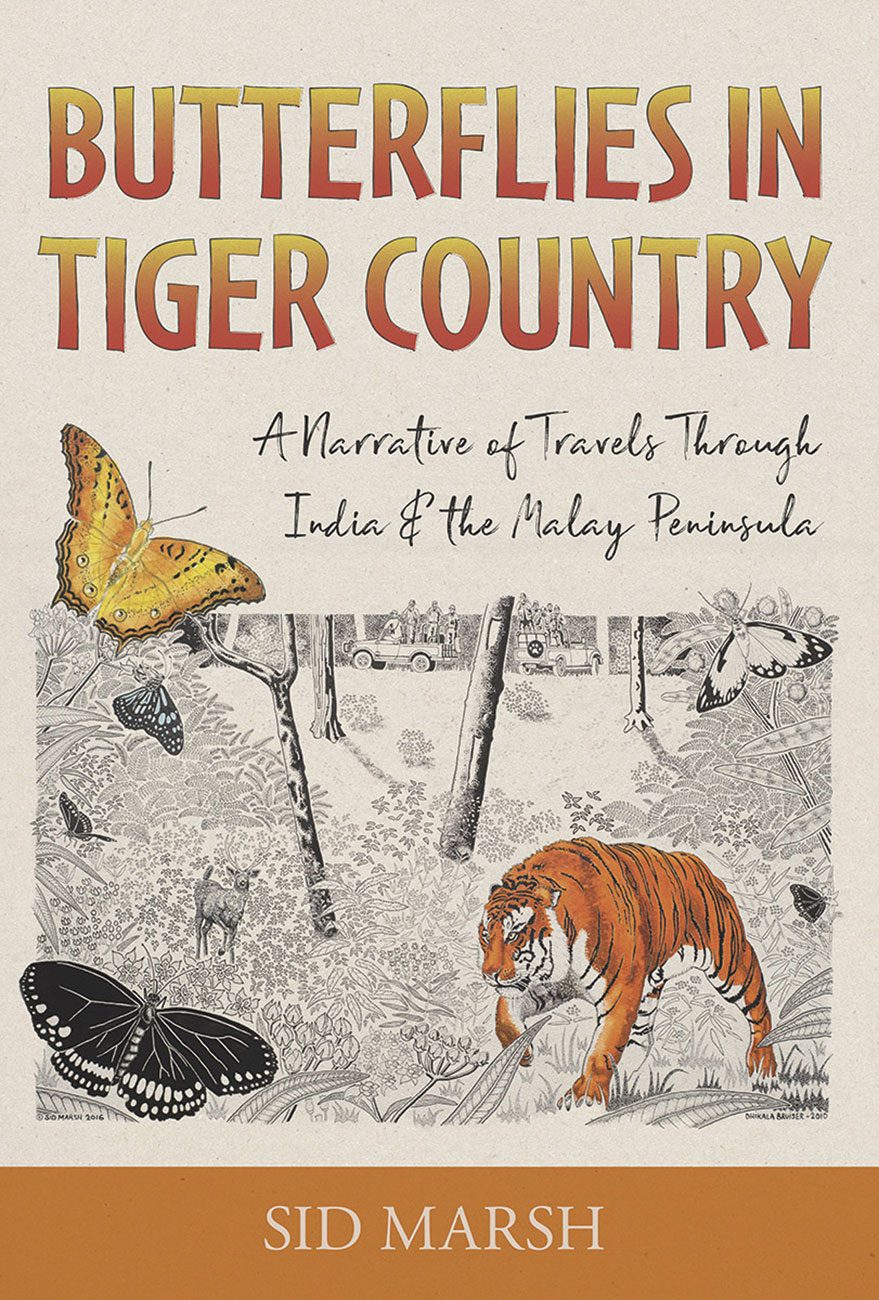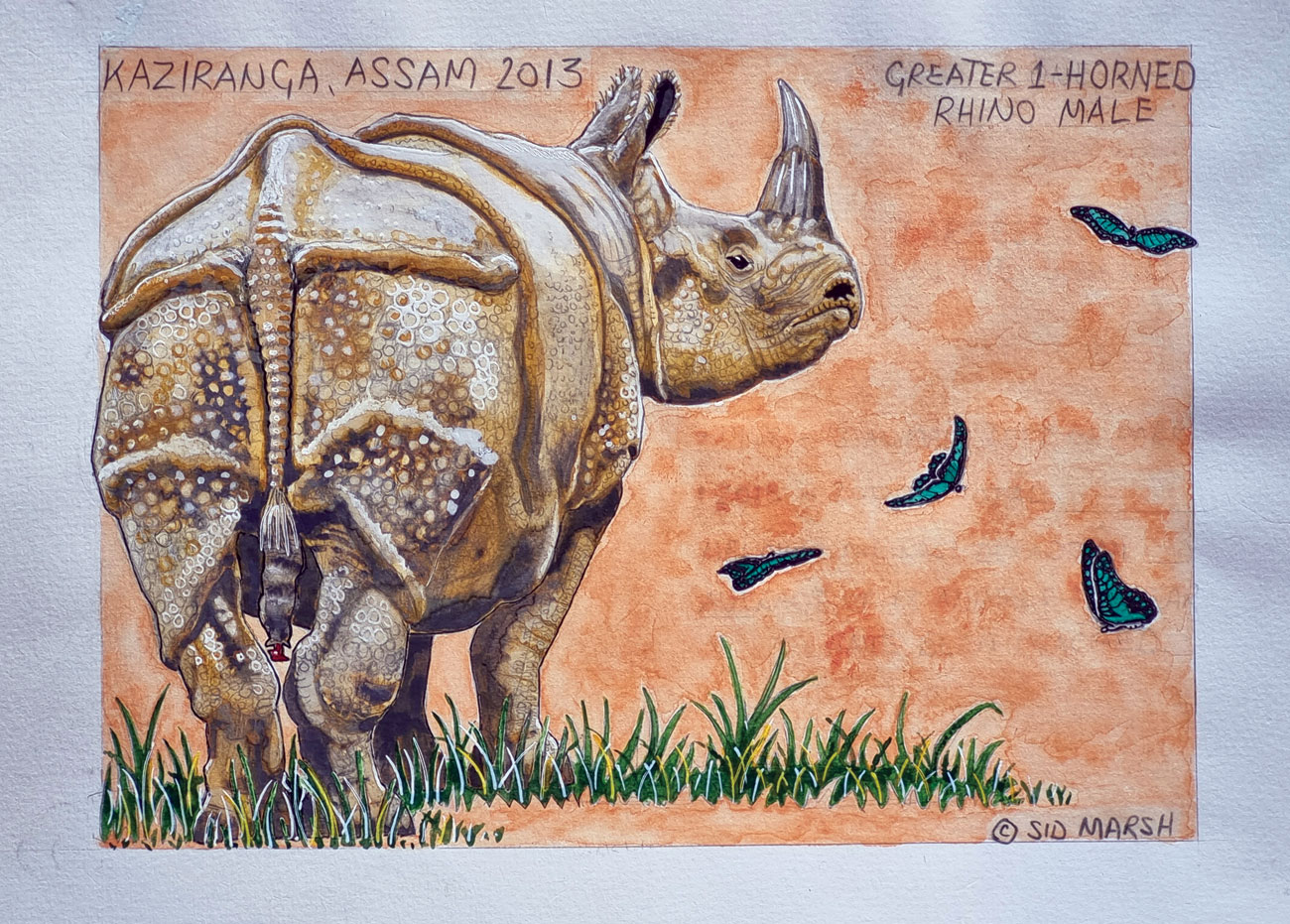Book Review: Butterflies In Tiger Country
First published in Sanctuary Asia,
Vol. 44
No. 4,
April 2024
With improved technology and a much greater appetite among the young for books to remind them of the wonderful biosphere in which they live, it is heartening to see how many new, high-quality publications are emerging from within India. Here is a book that Sanctuary believes should be in every public library and in the homes of all those whose hearts beat to nature’s drum.
Butterflies In Tiger Country
By Sid Marsh
Published by Copy Press Books,
Paperback, 520 pages,
Price: NZ$55

Over the past few weeks, I have tracked big cats on foot, analysed their markings, trekked up Gunung Tahan in Malaysia, lived through the terrifying human-tiger conflict of Singapore, peered at tattoos on Baiga women, and thoroughly enjoyed the gorgeous forests of India and Southeast Asia, through the eyes of Sid Marsh in his ninth book Butterflies in Tiger Country. The book is a compilation of the author’s meticulous, lively diary entries, which present snapshots of his travels over four decades from 1978 to 2023, with more focus on the last 13 years, to discover the big cats of the subcontinent. Along the way, he savours local food, gamely faces tropical weather, and explores local culture with as much interest as he has in the wild.
My curiosity was piqued by the contrast in the name… the butterfly, so delicate it would break at touch (aptly, butterfly names in the book are written in a pretty, cursive font, flitting off the page). The tiger, so powerful it could crack a skull with a swipe of the paw, is of course the subject of Marsh’s research trips, along with other big cats. However, the book is also brilliantly chock-full of other biodiversity observations – the nature of the forest, elephants, ungulates, birds, primates, and more. The writing is a wealth of information as it looks into the past, the science, and the author’s living present – historical names, Indigenous names, scientific names, all in one breath. A delightful aspect of the book is the attention to detail, even extending to the footnotes, which are brimming with interesting anecdotes, historical nuggets, and references. The illustrations, printed on photo paper, are as exquisitely detailed, true and intimate, corresponding to his writings of engaged interactions with the people and the wild.
The author emerges as a curious, accepting and positive person; lovely qualities in a traveller, wildlife enthusiast and researcher. Though an itinerant solo traveller, he makes deep connections with everyone he travels with. Throughout, there is no judgement, just detailed observations and marvelling at lives of people he meets. Unless it is someone snoring through the night, the phone being a constant distraction, or people amidst the wilderness being a nuisance!
On his Uttarakhand leg in India, the author brings alive Jim Corbett, the classic tiger connoisseur and hunter, whose writings have also inspired me to head into the wild with patience and keen observation. Alongside, he highlights more recent tragedies of human-animal conflict – reminding us that living by the wild may seem romantic, but it can affect your life greatly. Marsh also travels through Assam, Meghalaya, Madhya Pradesh, Gujarat, Rajasthan and Karnataka in India, highlighting the variety of the country’s forests and their people. About halfway through the book in Madhya Pradesh, Marsh discovers Sanctuary Asia while in Bandhavgarh!

February 25, 2015
06:41 hrs: Had another excellent sleep. Heard jackals calling last night. Very cool at present. Leafing through some of the reading material in the Junglemantra library I have discovered the magazine Sanctuary Asia. This has excellent in-depth articles and photographs pertaining to wildlife and conservation issues. I must have a troll through all the back copies up to the present.
Like the Singapore history section is written as a story, I would have liked some more sections of Marsh’s travels written in prose as opposed to diary entries, to read like a narrative. That said, Marsh’s meticulous journaling is inspiring, and his bibliophilia is reassuring – he collects books all along his travels, shipping them back and treasuring them and studying them, adding to his experience in the wild. Though I was making my own book list along the way, the last few pages are a treasure trove of a bibliography of close to 80 books, reports and magazine articles.
The author holds back no details of the journey and planning, warning the reader who might become a traveller that reaching the wild has many twists and turns, making the book as practical as it is immersive. Marsh’s book is a guide to the kind of travel that focuses deeply on the natural and local, dishing it out as he sees it, often sans the glamour, thus becoming a tome that one can go back to for tips!
Reviewed by Shatakshi Gawade



